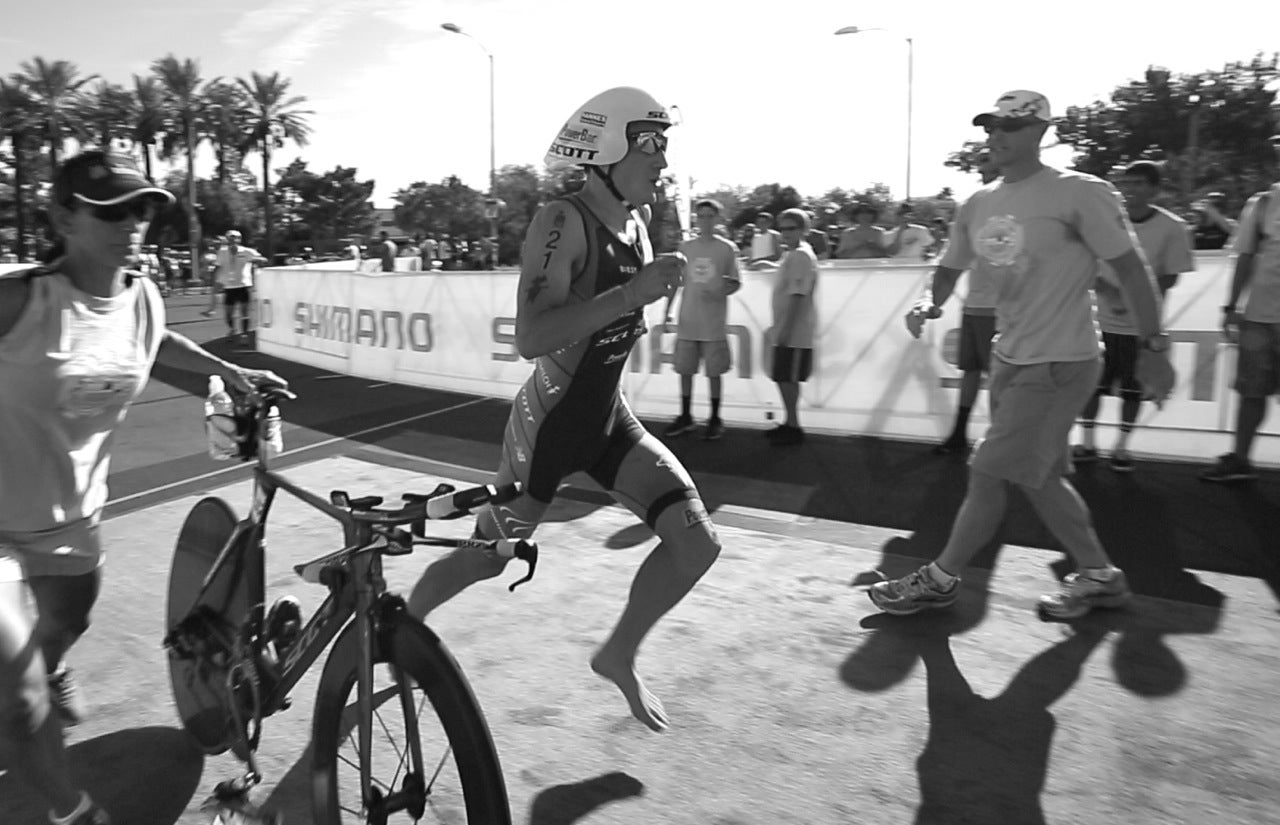Take A Chance On Your Triathlon Strength

Kienle came into T2 with a significant lead in Vegas. Photo: Steve Godwin
German überbiker Sebastian Kienle explains the risk-based approach that nabbed him the title of Ironman 70.3 world champion.
This article was originally published in the Jan./Feb. 2013 issue of Inside Triathlon magazine.
Although a rising star in Europe, having finished second at the 2010 and 2011 Challenge Roth and 2012 Ironman Frankfurt, Germany’s 28-year-old young gun Sebastian Kienle was hardly considered the favorite prior to the 2012 Ironman World Championship 70.3 in Las Vegas. “I wouldn’t have bet on myself!” Kienle admitted after the race. But gambling on his not-so-secret-weapon, bike strength (he set a world record iron-distance bike split at 2010’s Challenge Roth), Kienle overcame a three-minute post-swim deficit to reach the race leaders, then blew the field apart with an all-out, two-wheeled assault, gaining a three-minute buffer by T2. Conventional triathlon wisdom would have seen Kienle crumble midway through the half-marathon, yet the überbiker dug deep, holding onto enough headway to claim the crown in course-record time (3:54:35). Following his self-dubbed “suicide mission” (“But it was successful—I am in heaven!”), Kienle followed suit five weeks later with a fourth-place finish at the Ironman World Championship (despite losing time to a flat tire), leaving no doubt of his breakthrough into the spotlight on triathlon’s world stage. Below, Kienle shares his advice for taking risks—and making them stick.
RELATED – Video: Sebastian Kienle’s Kona Comeback
There’s more than one winning formula. Saving something for the run isn’t every athlete’s ideal M.O. “If you save up forever, you are still saving up for the next day,” Kienle says. “The main goal in the race is to be as exhausted as possible at the finish line. Then you reach your full potential.” He’s careful to acknowledge the years of trial-and-error experience that enabled him to push the pace “at a very high level for the longest possible time.”
Teeter under—not over—the line. “I was a little bit ill before Vegas so I couldn’t do everything I wanted to do,” Kienle says. “But if you think you are 100 percent prepared before the race, normally it’s too much! It’s better to stand at the start line and have 95 percent preparation and your mind at 105 percent because you are more relaxed. You don’t have that high expectation and you are fresher mentally. That’s a good combination I think!”
Take risks. “There are two kinds of risk,” Kienle says. “The first is doing something where you know before that you can’t do it. It’s just stupid. Then there’s another kind of risk, where you know it’s possible for you to get a good result.” Take reasonable risks, says Kienle, knowing you may not always succeed. “After the race, the most important thing is that you don’t have any regrets. Be happy with yourself because you tried.”
RELATED – Sebastian Kienle From Vegas: Being Underrated Was An Advantage